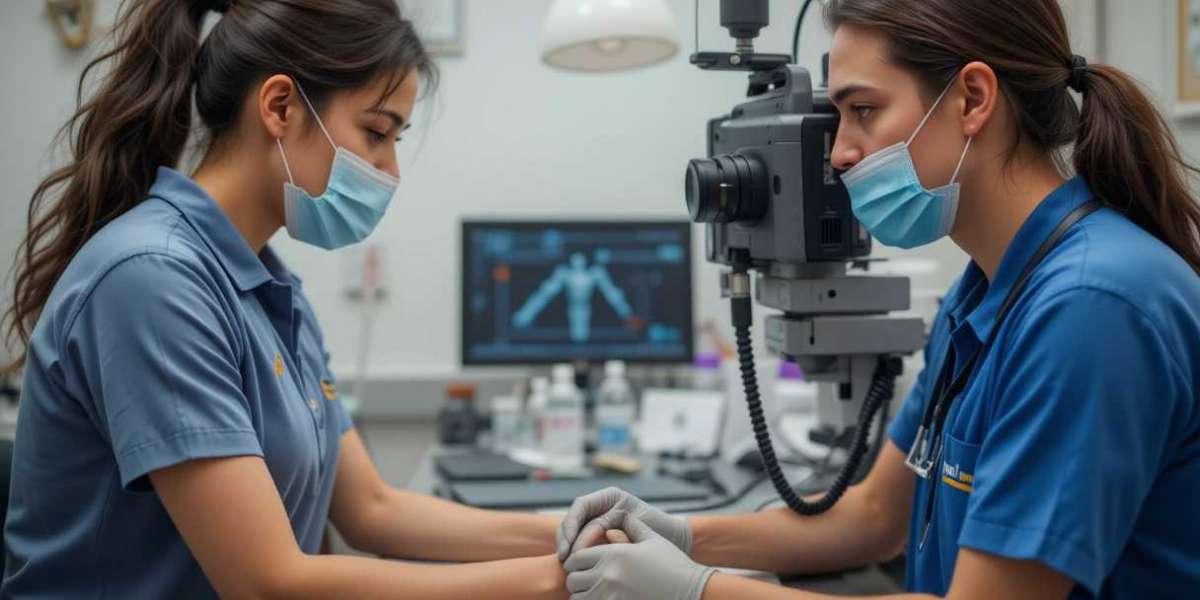Choosing a career path as a sonographer in Canada is a smart move for many who want a hands-on healthcare job with purpose. But once you enter the field, another question often comes up—which area of practice is best for me? Sonographers can work in different settings and focus on various parts of the body.
Understanding your strengths and interests can help you choose the right modality for your career path.
Understanding the Sonography Field in Canada
In Canada, a diagnostic imaging technologist uses ultrasound equipment to look inside the body. They create images that help other health professionals spot conditions early. These experts are key players in patient care, especially in hospitals, clinics, and mobile units.
Sonography is not just one role. It includes different areas of focus, called modalities. Each one plays a different part in healthcare, and each needs a different set of skills.
Most sonographers start with general training. From there, they may move into a specific path such as obstetrics, vascular imaging, or musculoskeletal exams. Every area has its own pace, patient type, and level of physical and emotional demand.
General Sonography: A Broad Foundation
General sonography covers many body systems. This includes abdominal organs, the pelvis, and soft tissues. It is often the first type of ultrasound training and gives new sonographers a solid base.
If you enjoy variety, this may be the right choice. You will see many patients, and no two cases will be the same. It offers stable job options in many locations across Canada. The work can be fast-paced, but you often have regular hours.
While general sonography is rewarding, it may not be as focused or specialised as other paths. Some professionals later choose to train in a different modality for career growth.
Obstetric and Gynecologic Sonography
This modality focuses on pregnancy, the female reproductive system, and fetal health. It is one of the most common and well-known uses of ultrasound.
Professionals in this area often work closely with pregnant patients. You may track fetal growth, check for problems, and support doctors during prenatal care. It is important to be kind, calm, and skilled at both communication and scanning.
This area can be deeply rewarding. Many patients remember their ultrasound visits as special moments. However, it can also come with emotional challenges, especially when results show a problem.
Vascular Imaging: A Growing Specialty
Vascular sonography looks at blood flow through veins and arteries. It helps diagnose blockages, clots, and blood flow problems. These tests are key for preventing serious issues like stroke or deep vein thrombosis.
This field needs strong technical ability and a steady hand. Vascular scans are detailed and must be done with care. You may work with older patients or those with chronic health issues.
The demand for this skill set is rising in Canada. As the population ages, more patients need vascular exams. This creates steady job opportunities for trained professionals.
Musculoskeletal (MSK) Sonography
Musculoskeletal sonography is all about joints, muscles, and soft tissues. It can help detect injuries or guide injections. This is often used for athletes or people with chronic pain.
MSK sonography requires detailed knowledge of the body's structure. You’ll need to pay attention to angles and positions. Since injuries vary, no two days will be alike.
This area is growing in sports medicine and physiotherapy. If you like movement science or enjoy anatomy, this could be the right fit for you. It is also helpful if you want to work in private clinics.
Paediatric and Neonatal Imaging
Working with children and newborns is different from working with adults. This modality needs both skill and compassion. Children may move more during scans, and you’ll often need to explain things in simple ways.
You may also work with premature babies or infants in neonatal units. These roles are high-stakes and emotional. But for many sonographers, helping the youngest patients is worth the challenge.
It’s a good fit for those with patience, quick thinking, and a calm personality. You may work in large hospitals or in places that offer specialty care.
Cardiac Sonography (Echocardiography)
Cardiac sonographers use ultrasound to view the heart. This includes its chambers, valves, and blood flow. The work helps diagnose heart defects, heart disease, and more.
You’ll need training in heart anatomy and function. This is one of the more technical areas, with a steep learning curve. But it also offers great job security in many provinces.
This role often involves close teamwork with cardiologists. If you enjoy heart science and want to make a big impact, this may be your ideal path.
Comparing Work Environments Across Modalities
Different modalities also mean different work settings. Some, like obstetrics, are more common in clinics. Others, such as vascular or cardiac imaging, are usually found in hospitals.
Your choice of work setting can affect your hours, pace, and even your schedule. For example, general imaging often runs on a day-shift model. Cardiac and emergency roles may include weekends or evenings.
Some modalities also involve more patient interaction. If you like talking with patients, obstetrics and paediatrics might suit you. If you prefer working with equipment and data, cardiac or vascular imaging may be a better match.
Training and Certification
To become a sonographer in Canada, you need to finish a diagnostic medical sonography programme. This usually takes two to three years. You also need to be certified by Sonography Canada or ARDMS.
After that, you can add special credentials for different modalities. These include certificates in vascular, cardiac, or musculoskeletal imaging. Some jobs may ask for more than one type of certification.
If you want to grow in your role, ongoing education is key. Many professionals attend workshops, online courses, or extra training each year.
Career Growth and Job Outlook
In Canada, demand is strong across all imaging fields. Cities and rural areas both need more professionals. This means more choice for where to work and how to grow.
Some roles are in higher demand, especially vascular and cardiac imaging. As chronic illness increases and technology improves, these areas will keep growing. For younger workers and career switchers, this is good news.
Across the country, you can expect good pay, steady work, and options to specialise further. For many people, this makes sonography a reliable career option with room to explore.
Final Thoughts
There is no one right answer when it comes to choosing a sonography path. Each modality has its own pace, rewards, and challenges. The best fit depends on your skills, interests, and career goals.
If you're curious about sonographer jobs, think about what kind of patients you want to work with and how much variety you enjoy. This one-time decision can shape a meaningful, long-term career in Canada’s healthcare system.








